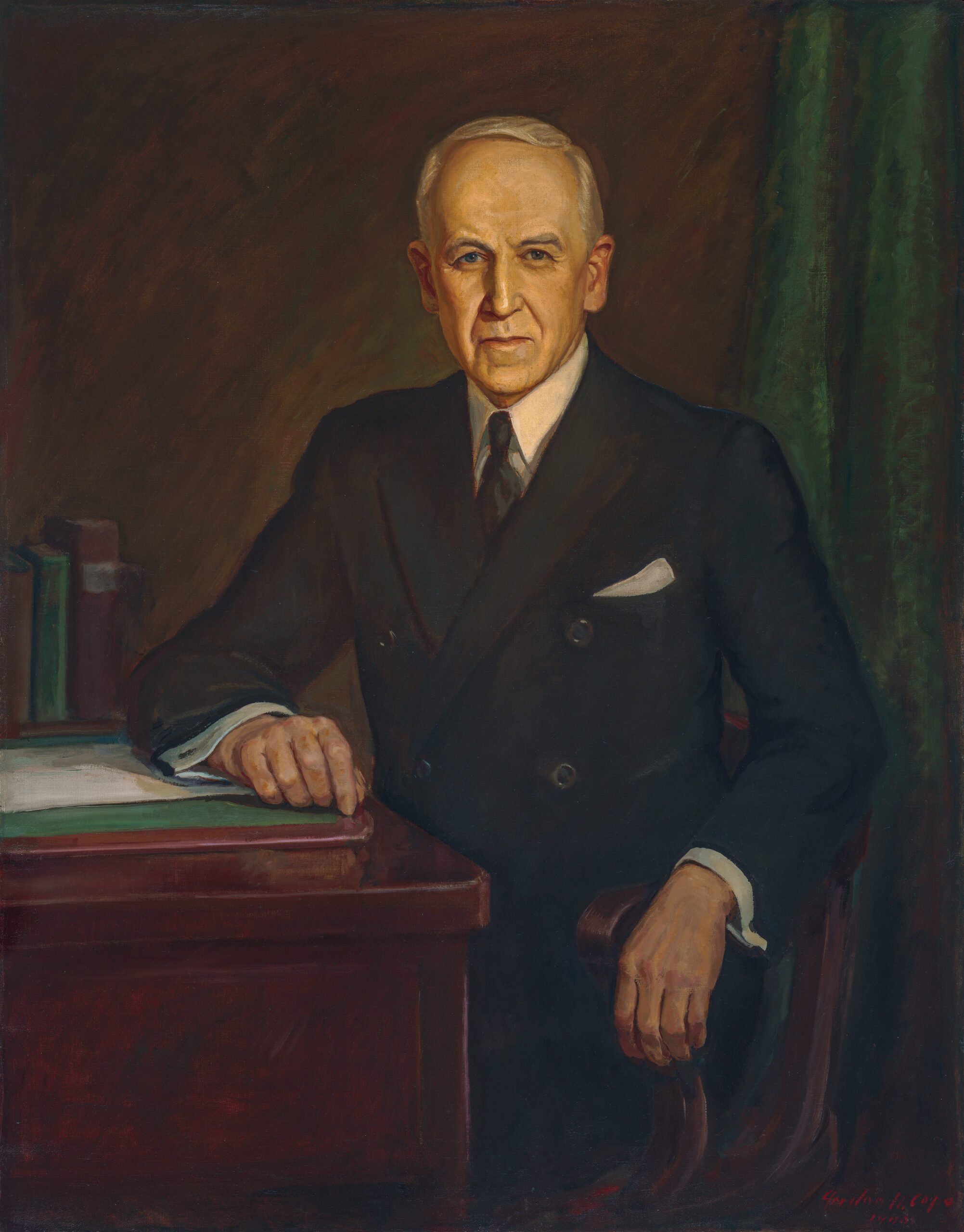HENRY HOOPER BLOOD
Governor 1933-1941
Henry Hooper Blood (1872-1942) was born in Kaysville, Utah. He worked in a variety of
occupations, including serving as manager of Kaysville Milling Company. Blood first
entered politics when he was elected as city recorder of Kaysville in 1893. In 1922,
Blood was appointed to the State Highway Commission, and three years later he was
selected chairman. This position gave Blood administrative experience and introduced
him to local officials across the state, which helped him in his bid for governor in 1932.
Blood served two terms as governor during the Great Depression. Utah’s unemployment
rate was 36 percent—the fourth highest in the nation—and in 1934, the state experienced
the worst drought in its history. Blood’s approach to these problems was to drastically cut
state expenditures, implement a pay-as-you-go policy, and obtain federal relief dollars
through New Deal programs. He was particularly successful in securing funds for
Civilian Conservation Corps and Works Progress Administration projects. He also
worked hard for the construction of dams throughout the state, which provided jobs and
improved area water capacity. Contrary to his own stance on alcohol consumption, Blood
supported the 1933 repeal of Prohibition, making Utah the final state necessary for
ratifying the 21st Amendment. He was the first governor to live in the Thomas Kearns
mansion, which still serves today as the governor’s residence.
ARTIST
Gordon Nicholson Cope (1906-1999) spent much of his career in Utah, training with
A.B. Wright and LeConte Stewart before going to Europe to study. He was the head of
the art department at LDS University (now LDS Business College). During the
Depression, he worked for the Public Works of Art Project and the Works Progress
Administration’s Federal Art Project, programs that provided civic employment
opportunities to artists in a variety of creative capacities.
